Rows of vineyards surrounding picturesque villages inspired the likes of Gustav Courbet and Victor Hugo. Eastern France sure knows how to put on a show! This guide will help you uncover the hidden gems in France you never knew you were missing out on. We delve into the Doubs and Jura region in Bourgogne Franche-Comté: copious amounts of yellow wine, an arduous tale of salt, and endless waterfalls await!
The repertoire of tourist attractions in France is seemingly endless, yet according to official statistics almost 50% of all tourism centers around Paris. Granted, the city is unparalleled when it comes to culture but there is SO MUCH MORE to France than Paris.
In this guide we head to Eastern France, halfway down the right side of the country in the direction of Switzerland, uncovering a truly unique place to visit in France: Bourgogne- Franche-Comté where we focus on the Doubs and Jura region.
Karst megaliths jutting from forested hills split open by rogue waterfalls that feed the swell of the Doubs and Loue river, the scenery almost makes you feel like you are somewhere in the middle of the Dolomites.
Please note: This post contains affiliate links, meaning I may earn a commission if you make a purchase by clicking a link (at no extra cost to you). Learn more.


Why visit the Bourgogne Franche Comté region in Eastern France?
The question is very valid. In all honesty, aside from the Alsace region – which is the undisputed Christmas Capital of France: Flammküchen, vin chaud and hundreds of twinkling lights in Colmar are sure to make even the Grinch change his mind about Christmas – I knew nothing about Eastern France.
After an exquisite week chasing fall in France throughout this region, experiencing the unbridled hospitality of locals, and getting a first taste of the lesser-known wines from Jura, I can confidently claim that my bucket list needs readjusting.
If you are looking for some unique places to visit in France, where the art of slow tourism and slow food is skillfully mastered, Bourgogne Franche-Comte is worth looking into. It has 8 out of the 41 Unesco world heritage sites in France and offers some of the most scenic hikes in France. Pack a sturdy backpack, a solid pair of walking boots, and your driver’s license, it is time for a road trip through some of the best kept hidden gems in France.
Best place to base yourself for exploring Eastern France
If you do not want to have different accommodations each night, use Besançon as your base to explore the Doubs and Jura region! Here is a selection of accommodations for each budget.
VALUE FOR MONEY:
Ibis Downtown Besançon
A no-nonsense 3-star hotel located a 5-minute walk from Besançon city center. Great location and good breakfast included in the highly affordable price.
TOP RATED: L’adresse à Besançon
Locally run hotel with free parking, large garden, and availabilities for a barbecue on site. Situated 3 kilometers (1.9 miles) from downtown Besançon (the time museum).
LOCALLY RUN: Hotel Le Sauvage
A former convent was rebuilt into a cozy upscale hotel complete with a spa and sweeping views over the city. 10 Minute walk from Besançon city center.
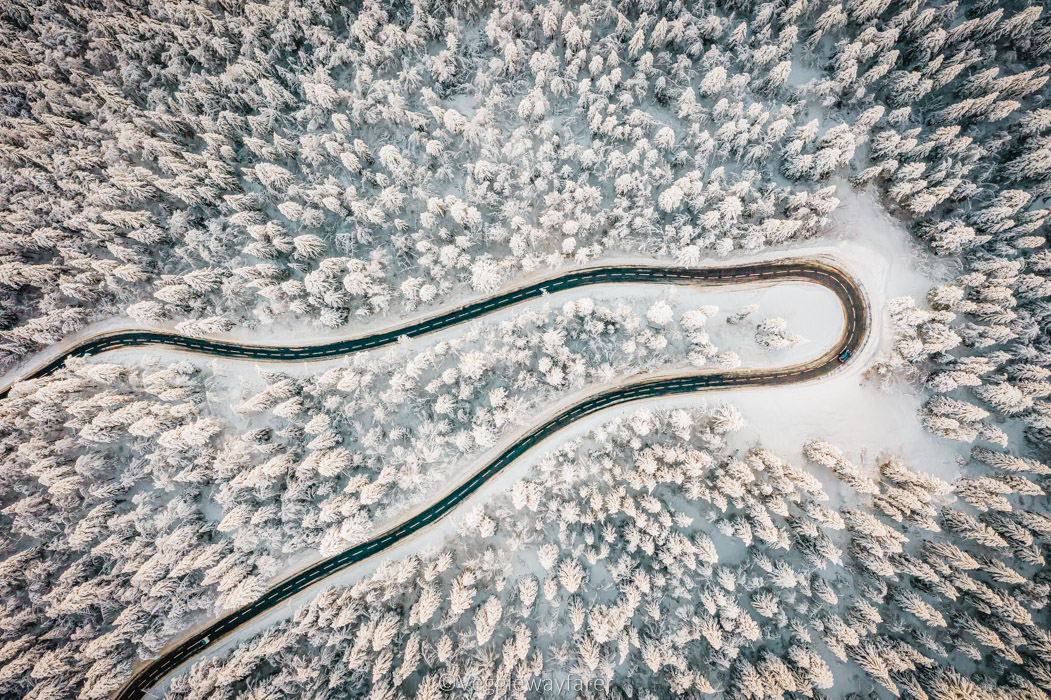
How to get around the Eastern France attractions?
Renting a car in Eastern France
The reward for traveling off the beaten track in France is pure authenticity, picturebook villages and some of the best food you will ever eat. The downside however is that some of these places are harder to get to, especially by using public transport.
We opted to rent a hybrid car, picking it up and dropping the car off directly at the Besançon train station. The price per day varies between €30 and €40 ($33-$43) depending on the type of car your rent.
Save your pennies: Check the cheapest rates for renting a car with AutoEurope
Documents needed for renting a car in Eastern France
- To rent a car in France you must be at least 21 years old and have a credit card that carries your name.
- Additionally, you will need to hold a valid driver’s license (at least one year old)
- If your license is not written in English, you will need an International Driving Permit (IDP)
- A valid ID (or passport) is also needed to rent a car


Hidden France: Things to do in the Doubs and Jura Region
From a culinary and cultural standpoint, the region is distinctly French, yet the architecture and landscape betray the vicinity of Switzerland: Wooden chalet-style houses, pear-shaped clock towers, and fluffy brown cows grazing lazily, golden bells around their neck echoing through the mountains.
Exploring the prettiest villages in Eastern France, hiking some of the most scenic hikes in France, and finding hidden gems the French don’t even know about are but a few things this region has to offer! The very best time to visit is during autumn in Europe, when the leaves turn 50 shades or orange.

1. Explore the quaintest villages in France

France has a wealth of little villages which hold in their clasp the very essence of French culture. Stay in a little Chambre d’hotes or gîtes (local guesthouses), explore the local heritage sites, and eat until your heart is content. Below five villages gave us a great insight into what makes the Franche-Comté region tick.

Besançon (Doubs Region), a true hidden gem in France
Outdoor activities: Check out espacestrail to get a feel of the multitude of outdoor activities on offer in the neighboring hills and rivers surrounding Besançon.
Walk with a guide: Learn everything about the city through a 2h private walking tour
How long to stay: Two days
With 116.000 inhabitants, Besançon is in fact a small size city and not so much a village. Yet it has that distinct village-like feel to it: Narrow little streets that end in small squares lined with houses behind which inner courtyards connected through beautiful outside wooden staircases and opulent gardens lie hidden from prying eyes.
The city is nestled in a valley surrounded by both karst monoliths – upon which sit forts that have protected Besançon since the Roman times. Fully encircled by the river Doubs, the city of Besançon has been pretty much impenetrable since the Romans set their eye on it, remnants of whom can still be found in the current day city.
Tip: There are two great sunset spots in Besançon. Citadel of Besançon (1.3km/.8mi from the city center) or Fort Bregille (4km/2.5mi) from the city center
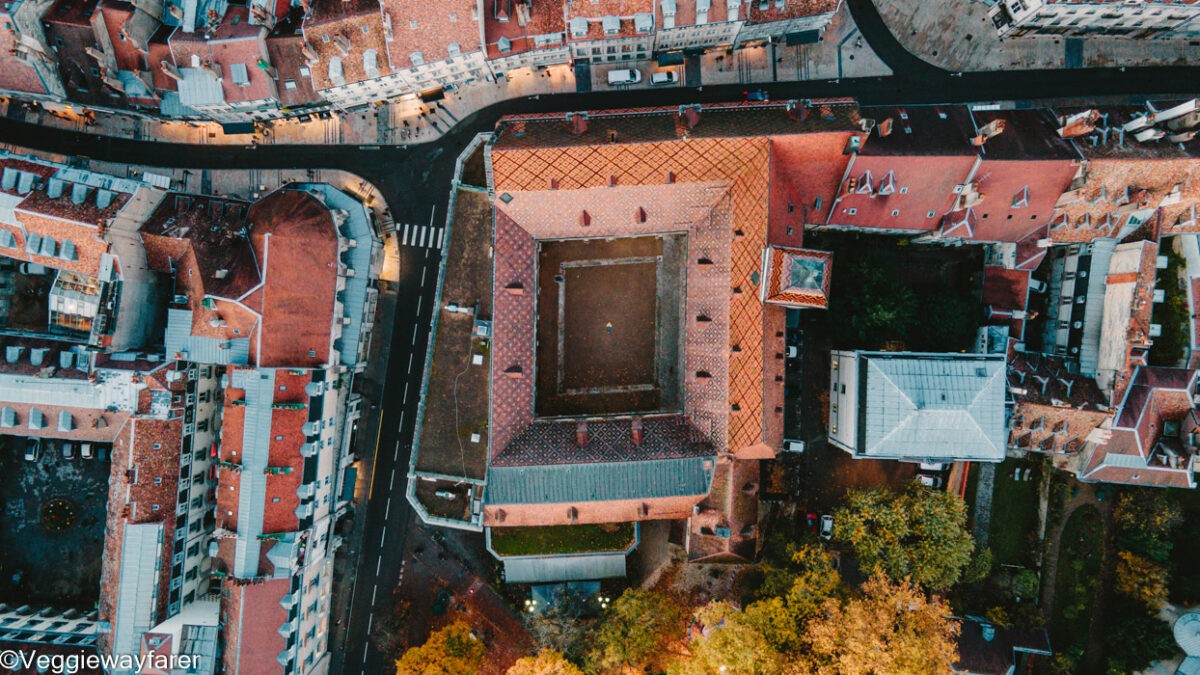
Things to do in Besançon
We start by clambering in the direction of the Besançon Citadel, a steady 15-minute walk from the city center, huffing and puffing we reach the top and witness the best views over the city! Next, we learn about the age-old tradition of clock-making in the Museum of Time and catch a glimpse of a modern interpretation of this UNESCO-classified tradition from the award-winning clockmaker Utinam.
As golden hours starts setting in we drive up to Fort Bregille to catch the second-best view over the city, which happens to be on the opposite side of the river. The sun sets behind the citadel indicating it is high time to head into town and explore. By the time we walk across Victor Hugo Square, named after its most famous inhabitant, the sun is shedding off the last light of the day and street lanterns take over to illuminate our path.
Time ran out on us, but we were told there is a walk to be done to spot the prettiest fountains in the city. If you do have some spare time march yourself to the local tourist office and pick up a map to go on a treasure hunt for the city’s fountains. Besançon truly turned out to be one of the most unique places to visit in France.
TIP | Short on time? Besançon is an easy day trip from Paris by train.
Find accommodations in Besançon

Ornans (Doubs Region)
How to get there: Besançon to Ornans – 25km/15mi (28 min car ride)
Gustav Courbet Museum entrance fee: €6 ($6.5)
How long to stay: The village is small so half a day is sufficient
Built on the banks of the Loue river, pastel-colored wooden houses and remnants of former thriving industries (mills and tanneries) still line the riverbanks today. The village of Ornans is a true hidden gem of France! The birthplace of the French painter Gustav Courbet is small in size – a mere 4000 inhabitants – but packs a lot of personalities.

Things to do in Ornans
The enormous 16th century Saint Lawrence church with its typical “Comtoise belfry” (four S-shaped sides), towers over the little village, sadly it is closed when we visit. On the Gustav Courbet square stands a statue created by the painter himself. It depicts a young boy, who originally was naked however due to public outrage was later piously covered up with a loincloth. Opposite the statue lies the Gustav Courbet Museum, which can be visited daily except Tuesday.
That however is not the most interesting part of the square. Here and there you will find lines marked on walls, next to which numbers are scribbled. These refer to the height of the water during the yearly floods, the last one dating back to 2021. To this day, each year this part of the town is flooded by excess water from the Loue river.
Find local guesthouses in Ornans

Arbois (Jura Region), the epicentre of Jura wine
How to get there: Besançon to Ornans – 47km/29mi (50 min car ride)
Louis Pasteur Museum entrance fee: €6.8 ($7.5)
How long to stay: One day (if you plan on a wine tasting)
From Gustav Courbet we move on the another illustrious Frenchman, this time in the realm of science. It is time to discover a little about Louis Pasteur and where he grew up, in the village of Arbois.
Things to do in Arbois
Before delving nose deep into the life and work of Louis Pasteur, we decide to head out of town to one of the many (many!) vineyards. Arbois is a lesser-known place for wine tourism in France yet still manages to produce 3,720,000 liters of wine a year or roughly 1091 liters per inhabitant.
We visit the Domain de la Pinte one of the region’s sustainable wineries and learn about what goes into cultivating wines sustainably and how it alters the taste slightly. Our visit coincides with autumn which has turned the leaves of the surrounding vineyards into a bright sea of orange. The grapes have long been harvested! Visit and tastings are available upon request.
Arbois might be a bit off the beaten track in France but Louis Pasteur is most certainly not. Learn all about his life, his scientific achievements, and how he not only was a scientist but also an artist. The visit to his house took around 1 hour. If you can, try and get a local guide to share their knowledge as it brings both the house and Mr. Pasteur to life.
Find locally run B&Bs in Arbois
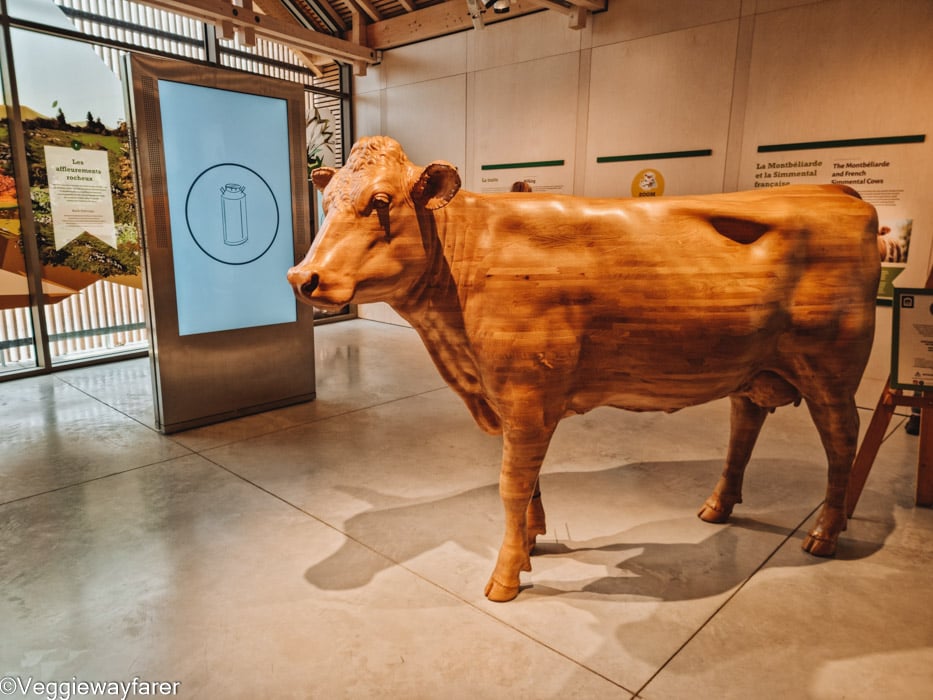
Poligny (Jura Region), truly venture off the beaten path in France
How to get there: Besançon to Poligny – 57km/35mi (55 min car ride)
La Maison du Comté museum entrance fee: €10,5 ($11.4)
How long to stay: Half a day
Located at the foot of the Jura mountains, surrounded by vineyards and limestone cliffs lies the picture-perfect little village of Poligny. The village has got to be one of the most beautiful places in France to live, yet only 4000 people call it home.
Things to do in Poligny
The reason we stop in Poligny is to visit the La Maison du Comté (the home of the Comté cheese), an interactive museum that showcases the origins of one of the jewels of the Bourgogne – Franche- Comté region, the Comté cheese. Initially, I was skeptical, as generally, I prefer a museum dedicated to art and culture and not, well cheese.
Cheese is one of the staples in French Cuisine. For the region of Franché-Comte, the cheese of choice is the Comté, which is ubiquitous in Franche-Comté: used as an ingredient in many regional dishes, served as the perfect accompaniment to some Yellow Jura wine, or proudly adorning the cheese plate that is eaten before dessert.
The museum turns out to be super fun! We tread through the halls sniffing smells, identifying odd textures through holes in the wall, and exerting momentous strength while (failing) to pick up a cheese wheel.
Find a quaint guesthouse in Poligny

Dole (Jura Region)
How to get there: Besançon to Dole – 52km/30mi (51 min car ride)
Notre Dame Collegiate Church entrance fee: Free
The Perched Cat Walking Route: 4km long (2.5mi), pick up the map at the tourist office of Dole
How long to stay: One day
With a population of 27.000, Dole is close in size to Besançon, yet it is still considered one of the hidden gems in France. The city in Eastern France has an extraordinary amount of churches and cloisters, the pinnacle of which is the UNESCO classified Notre-Dame collegiate church of Dole.
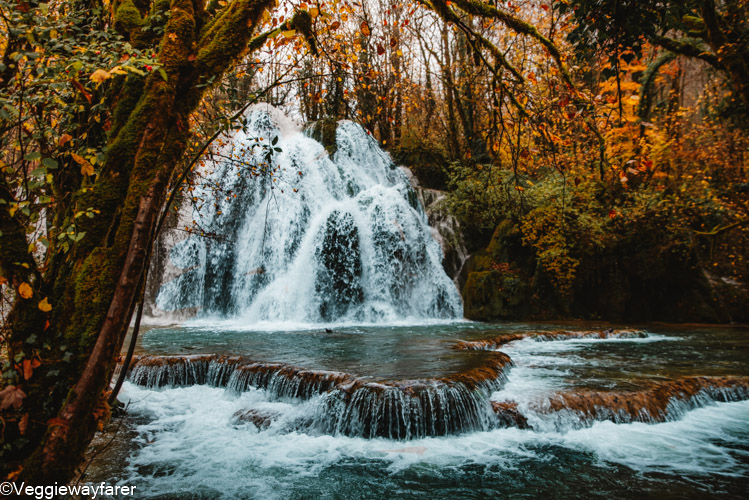
Things to do in Dole
The best way to get a feel of the city – from the ground – is to follow the little silver circles imprinted with a cat that has been strategically placed around the city. These little circles form a 4-kilometer (2.5 miles) (walking route taking you to see the house where Louis Pasteur was born, the Collegiate church, and 35 other historically important buildings in Dole.
The symbol of the perched cat was not chosen at random, it refers to the children’s book called Les Contes du Chat Perché (Tales of the perched cat) by the famous French novelist Marcel Aymé who went to school in Dole and wove elements of the city of Dole into his famous story.
For sunset, we climbed the 500+ stairs of the collegiate church that make up the bell tower and are rewarded with impressive views over the city. The spider web blueprint upon which this old city was built and the interesting phenomenon of chapels construct within inner courtyards – the spires of which are just barely visible from the street – unfold in front of us.
Find a great locally run accommodation in Dole

2. Workout with some of the best hiking in France

The Jura mountains contain some of the most underrated places in France to go hiking! This translates into beautiful nature with only a handful of people around. The region is known for its rolling hills, which offer the perfect playground for both novice and advanced hikers. It reminded me slightly of northern Tenerife, another paradise for hikers of all levels.
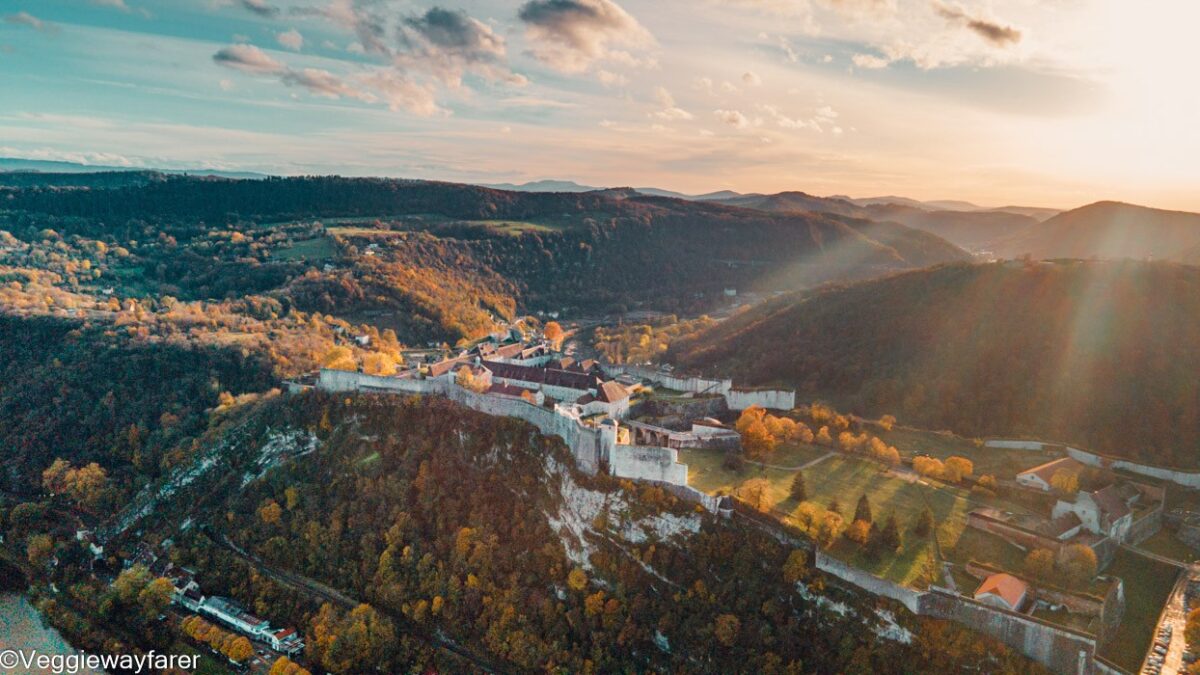
Hikes around Besançon
Beginners hikes
Looking for walks inside the city, try one of the three well-marked routes that range from 2.5 to 4.6 km (1.5-3.5 mi). If you want to get outside the city to stretch your legs, Komoot has a range of 20 hikes to choose from
Intermediate and advanced hikes
Want to conquer one of the 7 hills around Besançon on a day hike or multiple-day hikes? If you speak French, the Grandes Heures app is a great resource created by locals with intimate knowledge of the region. If not, no worries there are plenty of hiking routes available on Espaces Trail with varying degrees of difficulty.

Hikes around the Belvedere des quatre lacs, a true gem in Eastern France
Looking for some of the most scenic hiking trails in France? Then consider driving to the four lakes, where the Jura region shares a border with Switzerland it will treat you to landscapes that are vaguely reminiscent of the Dolomites in Italy.
Sadly we ran out of time during our stay and were unable to do this hike. Instead, we opted to take in the view from the viewing platform (Belvedere des Quatre Lacs) which is right off the parking lot mentioned below. If you have 30 minutes to spare, walk 500 meters from the “Belvederes des Quatre Lacs” to the “Belvedere des trois lacs” (viewing platform of the three lakes) to get a better viewpoint of the lakes.
In essence, you hike around the 4 lakes in a loop, and getting lost is virtually impossible (good news for the directionally challenged travelers like myself). There are a few varieties (add-ons) you can take making the hike longer or shorter depending on what strikes your fancy. The terrain for the hikes is categorized as moderate, the views epic making it one of the best hiking trails in France for the occasional hiker (i.e. me and most likely the majority of active travelers).
Two of the most popular hikes are the following:
Easy Hike: 4 Lakes Tour (10,9km/6.8mi) Download the hike info (path description, pictures) and GPX coordinates)
Intermediate Hike: 4 Lakes and Pic de l’Aigle Loop (15km/9.3mi). Download the hike info (path description, pictures) and GPX coordinates
Parking: We opted for a free parking right next to the viewpoint of the four lakes. The above-mentioned hikes pass by this lookout point so you can easily start your hike from this parking lot.

Hike to some of the most unique places to visit in France: Waterfalls!
When I think of hiking in France, waterfalls are not the first thing to spring to mind. Yet if there is one thing you will find aplenty in the Jura Region it is just that. While the waterfalls are a little smaller than the waterfalls in Italy, they are still very much worth a visit.
As you are truly exploring the beaten path of France, you can expect the waterfalls to be relatively calm all year long (especially in comparison with trails in the French Alps which is THE hotspot for walking holidays in France).
We visited two waterfalls near Salins-les- Bains with hiking trails around them:
Cascade des Tufs: Easy hike 3,7km/1.7mi (map), Moderate hike 8km/5mi (map)
Source du Lison: Moderate hike 5km/3.1mi (map), Difficult hike 14,2km/8.8mi (map)

3. Uncover a couple of real hidden gems in France even the French don’t know about

To say there are a lot of heritage sites in France is a vast understatement. Visiting all of them would most likely take you a lifetime, or three. The Eastern France Franché-Comte region has its fair share of heritage sites, the coolest are linked to the production of salt which personally was not something I thought France was famous for!
Salt was a widely used commodity and an important ingredient for preserving food dating back to Roman times. This white gold was used to pay Roman soldiers and steadily grew in importance in the subsequent decades.
The ubiquity of salt led the French Government to impose the gabelle (salt tax) in the 14th century which lasted all the way up to 1946. The region of Franche-Comté has a large number of salt springs which were a key driver for the economic growth of the region accounting for half the income of the region.
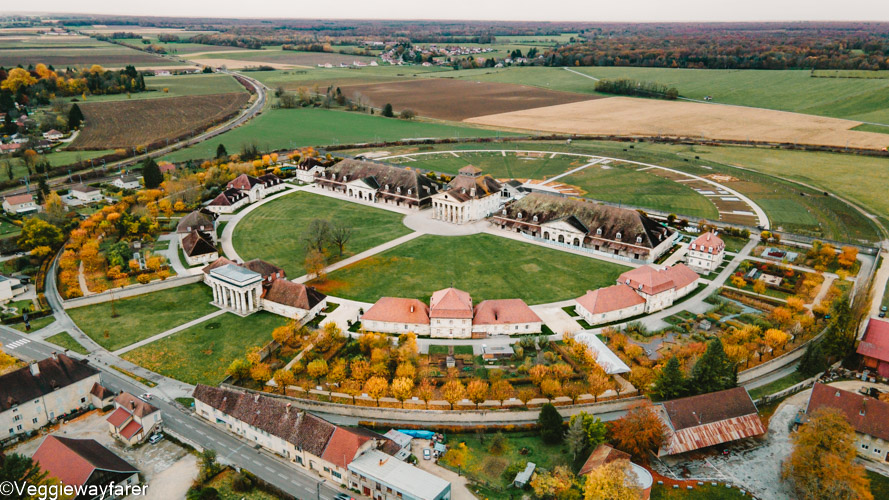
Saline Royale d’Arc-et-Senans
Perhaps the biggest surprise and “wow” moment during our trip came when we walked into the Saline Royale d’Arc-et-Senans, a monumental feat of 18th-century industrial architecture that received UNESCO world heritage status in 1982 yet somehow continued to be a true hidden gem of France, surprisingly so.
The Saline Royale was built as a place to manufacture salt. Yet it was more than a ‘simple’ factory, the idea was to create a standalone city that could house 3000 inhabitants, never reaching that potential at the height of power it filled but a mere 10% of this capacity.
Shut down in 1895 due to a lawsuit and inefficiency the Saline Royale became an orphanage; a war camp, a derelict building, and finally a museum and exposition area. In winter the unheated former salt storage barn houses an ice skating rink and Christmas market.
This complex semi-circular factory was designed by Claude Nicolas Ledoux. Though he is said to have been the official architect of Louis the 15th and one of the most prolific architects of his time, little is leftover of his impressive oeuvre which was mainly based out of Paris. With the rigorous 19th-century rebuild of Paris undertaken by Haussman, much of his work made way for a newer version of Paris. buildings are left standing as Haussman came along and completely restructured 19th-century Paris
How to get there: Besançon to Saline Royale – 34km/21mi (40 min car ride)
Museum entrance fee: €12,5 ($13.6)
How long to stay: A visit will take up to 2 hours

Grande Salines in Salins-les-bains
While the Saline Royale d’Arc-et-Senans is worth a visit from an architectural point of view, to really get an understanding of how salt was produced we head to one of the most underrated places in France, the Grande Salines in Salins-les-Bains. Our guide passionately explains how salt was mined from water and delves into the harsh conditions in which workers had to work and the reason for the downfall of the salt mines.
We take a peek underground in one of the only underground galleries in Europe dedicated to the production of salt and set our eyes on a massive wooden water pump that to this day is still used for the (very limited) production of salt. This salt is sold in small amounts or used to produce salted caramel candy (delicious) that can be bought at the reception.
How to get there: Besançon to Salins-les-Bains – 42km/26mi (47 min car ride)
Museum entrance fee: €8 ($8.7)
How long to stay: The museum visit is one hour

Château de Cléron
Autumn in France is epitomized by the Château de Cléron in early November. In one of the many bends of the Loue river, surrounded by beautiful gardens and a little waterfall lies a proper castle, turrets and all – Much more picturesque than any of the castles in Belgium.
We pull up and notice it is closed, Google dutifully informs me that the Castle is in fact privately owned and only the gardens are op to the public, during a select few weeks in summer.
Ever so slightly bummed out we park the car in the parking lot opposite the castle. Following the road that slopes upwards gently will bring you to a low brick wall, from which you have a clear view of the castle. If you feel like a beautiful scenic drive to get a taste of undiscovered France, it is worth navigating from Besançon to the Château de Cléron, it is a good pit stop if you are driving to Ornans (12 minutes from Ornans).
How to get there: Besançon to Château de Cléron – 27km/17mi (30 min car ride)
Visiting the gardens: Entrance fee €3 ($3.30); in July and August only


4. Indulge in a true highlight of Eastern France: Wines from Jura

There is no coming to grips with France without coming to grips with French Wine. The country has more than its fair share of starlets: Alsace Riesling, Sauvignon Blanc from the Loire Valley, Pinot Noir from Burgundy, or Merlot from Bordeaux.
Jura wines at a glance
Franche Comté Jura wines do not tend to make the red carpet when discussing wine tourism in France, unjustly so. The Jura vineyards are small in size but offer a surprisingly rich variety of different wines.
- 7 AOCs: With Arbois wine having received the first French AOC label
- 5 Grape varieties: Chardonnay, Savagnin, Poulsard, Pinot Noir, Trousseau
- Jura Yellow Wine: The wine is an intense yellow color. Left to mature for 6 years under a thin veil of yeast, this wine is full of character. Great to pair with aged Comté cheese
- Vin de Paille: This very sweet white wine is almost caramel in color and tastes of candied fruits, a marmalade of honey.
- Macvin du Jura: This liqueur wine comes in white, red, or rosé form and can be drunk as an aperitive or a digestif.
- Marc du Jura: An amber-colored brandy that is the perfect digestif

Tasting Wines from Jura: Where to go and when
Our trip coincided with fall in France, the vineyards no longer held any grapes and the landscape turned into a patchwork of different shades of orange. Absolutely spectacular to see, but not the best time for wine in the region as the grapes had long since been harvested and the vines started losing their leaves.
If you are visiting the Franche – Comté Jura region especially for the wine try and head over during spring or early fall (October at the latest)
Wine festivals in the Jura region you do not want to miss
Le Biou (Arbois, September): A folkloric festival that goes back many years. A festival that marks the time before the harvest, with a procession of the biou (a carefully crafted centerpiece with nearly 80 kilos of grapes hanging from it).
Percée du Vin Jaune (Arbois, February): A folkloric festival dedicated to the typical Yellow wines from the Jura Region. At the festival, you can taste wines from 70 regional wine producers and partake in a religious ceremony where a 228-liter cask of white wine is ceremoniously opened and shared amongst participants!


Eastern France itinerary: 5-days in Jura & Doubs
Visit some of the best places in Eastern France on a 5-day itinerary. The below itinerary is roughly the route we took for our trip. Truth be told 5-days involved a lot of rushing from point A to point B therefore I would recommend extending your trip to have a full week.
DAY 1: Arrival in Besançon
DAY 2: Ornans, Chateau de Cleron, Saline Royale
DAY 3: Salins-les-Bains, Arbois
DAY 4: Poligny, Dole
DAY 5: Lac des quatre Belvederes, Besançon
Recommended Itinerary Change: Spend an extra day in Arbois touring the vineyards and taking a local wine tour. Finish your trip with one full day in Besançon to hike up to the various viewpoints.


Hidden France: Bourgogne Franche Comté conclusion
As far as tourist attractions in France go, Eastern France and the Doubs and Jura region is one of the most authentic and hospitable regions in the country. There are few hidden gems in France that are as well guarded as the Jura region. It is the perfect spot for travelers who love hiking, good wine, and generally enjoy slower-paced tourism.
MORE TRAVEL RESOURCES FOR TRAVELING IN EUROPE
France: One week trip to Nouvelle Aquitaine in SE France
France: Travel guide to the village of Brantôme in Dordogne
France: In-depth guide to visiting Rocamadour
Belgium: A local’s weekend guide to Brussels
Belgium: 24 Beautiful places in Belgium for your bucket list
Europe: European landmarks you need to visit once in your life
Italy: Unexplored places in Italy, a guide to the quaint region of Umbria
Switzerland: 3 day itinerary to the Vaud Region in Switzerland
Hidden gems in France – Jura and Doubs Region in Eastern France: Pin it








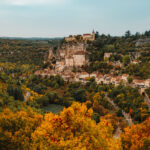





0 Comments